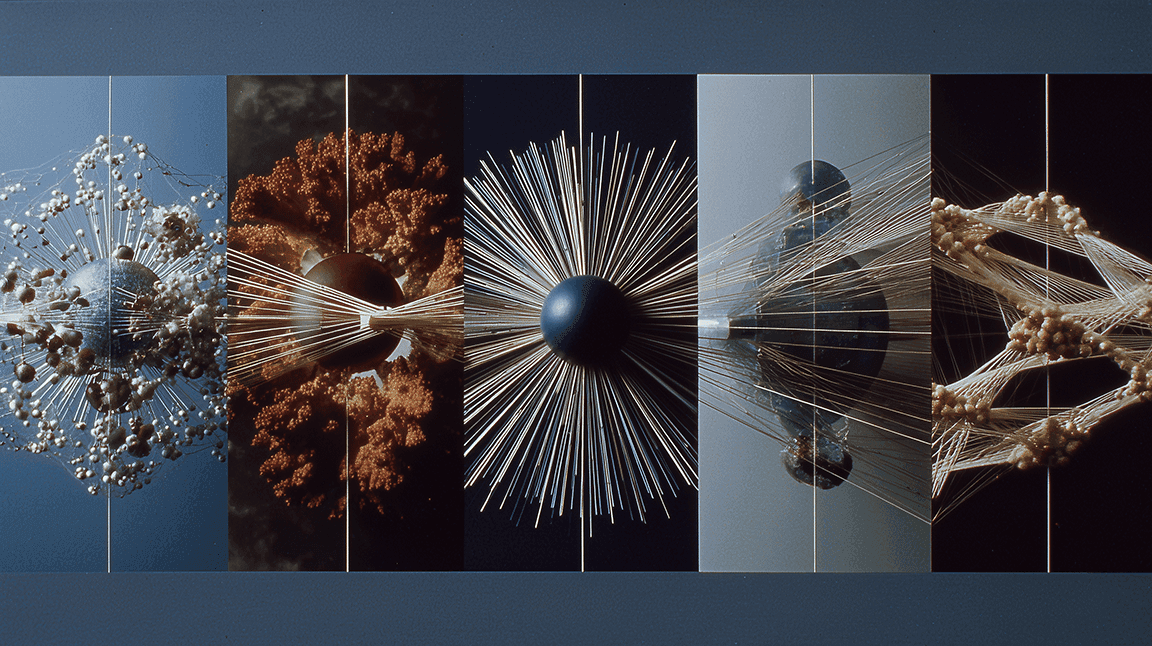
Beyond the Turing Test: New Metrics for Computational Creativity
A practical proposal for measuring computational creativity with metrics that reward discovery and usefulness rather than mimicry, including concrete formulas, protocols, and guardrails.
Stop asking whether a model can pass for human.
Start asking whether it can widen human possibility, and measure that with concrete signals.
Why the Turing frame is the wrong scoreboard
The classic Turing Test asks if a machine can imitate a person convincingly enough to fool a judge. That might be fun for a demo, but it is a poor lens for creative work. Imitation is not the ceiling we care about. A creative partner earns its keep when it helps people go somewhere they could not reach alone, then does so in a way that is useful, legible, and repeatable. Passing as human is orthogonal to that goal. Plenty of humans are uncreative on a deadline. Plenty of machine outputs are interesting without sounding like a person at all.
If our scoreboard rewards mimicry, teams will optimize for sameness. They will seek the most human sounding tone and the most fashionable style, because that wins the game. The cost is exploration. The better question is not whether the model can blend in, it is whether it can lead us toward better moves without breaking constraints we care about. That means new metrics and new benchmarks designed for discovery.
What a creativity metric should capture
Before naming metrics, it helps to write the rules of the road. A good creativity measure should be:
- Grounded in a live task with constraints that matter to users.
- Sensitive to both novelty and usefulness, not novelty alone.
- Cross modal by design, or at least adaptable across text, image, audio, motion, and code.
- Hard to game by superficial tricks like random noise or buzzword salad.
- Friendly to a human in the loop workflow, because that is how real studios work.
With those properties in mind, we can define a family of signals that together describe creative lift. None of them is perfect in isolation. Together they make a sturdy picture.
Metric 1: Conceptual Distance
What it is: a measure of how far the output travels from the prompt while staying aligned to the brief. Think of it as a distance that must be safe rather than reckless.
How to compute it: embed the prompt and the output into a shared semantic space, then calculate a distance score that is corrected by a constraints fit score. For text, use sentence or document embeddings. For images, use vision language models that place text and image in the same space. For music or motion, use learned embedding spaces that correlate with human judgments of theme and style.
Why it helps: if an answer sits right on top of the prompt, it is likely boring. If it is far away and also fails constraints, it is novelty for novelty’s sake. The sweet spot is a healthy distance paired with high fit.
Practical notes: compute two numbers. D, the raw semantic distance. F, the constraint fit between 0 and 1, where 1 is perfect adherence. Then report D times F. A system learns to travel farther only when it remains useful.

Metric 2: Combinatorial Novelty
What it is: a score for how well the system synthesizes disparate influences into a coherent whole.
How to compute it: first, extract reference influences from the output. This can be done with classifier probes or retrieval against a labeled corpus. Then measure how far apart those influences are on a knowledge graph or embedding space. Finally, score coherence by asking a critic model or a human panel to judge whether the synthesis feels intentional rather than pasted.
Why it helps: creative work often feels new because it braids distant families. A logo that borrows from navigation charts and coral morphology can feel fresh without shouting. We want models that can hold that kind of braid.
Practical notes: compute the mean pairwise distance between identified influences, then multiply by a coherence score from 0 to 1. Penalize outputs where influences are many but shallowly expressed.

Metric 3: Influence
What it is: a forward looking signal that asks whether the model’s ideas change what humans do next. If people adopt the move, it is creative in the only sense that matters in the world.
How to compute it: in the wild, track reuse and adaptation. That can be citations, remix chains, prompt reuse, code forks, motif adoption inside a studio, or design tokens that propagate across projects. In a synthetic testbed, run multi agent studies where human participants pick among candidates for their own work, then watch which model proposals show up in later drafts.
Why it helps: an isolated clever artifact might not matter. A move that spreads is a creative mutation with fitness.
Practical notes: influence requires time. For benchmarking, use a two stage protocol. First, a blinded selection round. Second, a delayed follow up where participants build on chosen seeds. Score by adoption rate and transformation depth.
Metric 4: Constraint Satisfaction under Surprise
What it is: a test of whether the system can produce outputs that surprise evaluators while satisfying hard constraints like budget, accessibility, brand rules, or latency.
How to compute it: define constraints formally where possible. For design, that might be color contrast and token use. For code, that might be time and memory limits. For music, that might be duration and instrument palette. Collect outputs at varying exploration levels, then ask judges to flag surprise while an automated checker validates constraints.
Why it helps: most real work lives inside constraints. A model that can only be interesting by breaking the rules will not ship.
Practical notes: report a two number pair. S, the mean surprise rating on a 1 to 5 scale. C, the pass rate on constraints. Then compute S times C. Reward systems that find interesting moves without cheating.
Metric 5: Path Originality
What it is: a measure of whether the model reached a result through an unusual sequence of intermediate states. The final artifact may look familiar. The path shows whether the thinking was novel.
How to compute it: require models to output intermediate sketches or steps. Compare those to a library of common paths collected from human and model workflows. Score higher when the sequence diverges in meaningful ways without reducing fit.
Why it helps: in fields like Go, the same board state can be reached through different lines of play. Move 37 mattered not only because of where it landed, but because it exposed a new way to get there.
Practical notes: build a small path language for each domain. For layout, that could be grid choice, motif placement, and reveal timing. For code, that could be algorithm selection and decomposition order. Use edit distance over these sequences to score originality.
Metric 6: Temporal Resilience
What it is: does the idea still read a week later after a cold look. Novelty fades. Good ideas survive.
How to compute it: run a delayed evaluation. Have the same judges re score the same outputs after seven days without seeing their previous votes. Reward ideas whose ratings improve or remain stable.
Why it helps: many model tricks look cool once and then collapse into gimmick. Temporal resilience reduces false positives.
Practical notes: store anonymous rater IDs and ensure the second session is truly blind. Report the delta.
Metric 7: Translation Fidelity
What it is: the ease with which a human can translate the model’s raw output into a shippable artifact without excessive rework.
How to compute it: give a designer, writer, or engineer a model draft and a fixed time budget. Measure how much survives into the final. You can track token reuse for text, layer reuse for design, or function reuse for code. Ask the human to self report friction points.
Why it helps: surprise without translation is a mood board. Surprise with translation is a product. Creativity needs a path to ship.
Practical notes: normalize by skill level and provide minimal training so the result is not confounded by tooling unfamiliarity.
Metric 8: Human Lift
What it is: how much a specific human improves when paired with the system compared to their solo baseline on the same task.
How to compute it: run within subject studies. Each participant performs matched tasks with and without the model. Score outputs with the same rubric and compute per participant lift. Aggregate with confidence intervals.
Why it helps: this is the centaur score. It respects that creativity is relational. A model might be perfect for one writer and unhelpful for another. We want tools that raise many boats.
Practical notes: stratify participants by experience level. Many tools lift juniors more than seniors. That is fine if you know it.
A strong creativity model is not a soloist.
It is a multiplier for the person at the wheel.
A benchmark suite that looks like real work
Now turn the metrics into a repeatable suite. The suite should include tasks that feel like what studios and teams do weekly, across multiple mediums, and with constraints that bite. Here is a starter shape.
-
Text:
write a 400 word explainer for non experts on a specialist topic, plus a title and two social hooks. Constraints include reading level, one verifiable number, and an analogy that must come from a supplied domain. Score with conceptual distance, combinatorial novelty, translation fidelity, and temporal resilience. -
Design:
produce a landing page wire, a hero line, a three color palette with contrast checks, and two static social cards. Constraints include token use, accessibility, and a brand brief. Score with constraint satisfaction under surprise, path originality, and human lift. -
Audio and motion:
create a 15 second loop that conveys a given product promise without narration, plus a one paragraph rationale. Constraints include length, instrument palette, and a list of forbidden tropes. Score with combinatorial novelty, temporal resilience, and translation fidelity. -
Code:
propose an algorithm for a defined problem, generate a reference implementation, and provide a one page design note with trade offs. Constraints include time and memory. Score with conceptual distance, path originality, and human lift.

Preventing metric gaming
Any scoreboard will be gamed if there is incentive. Protect the suite with a few boring but vital rules.
- Hide the exact weighting. Publish the metrics, not the weights.
- Randomize constraints within a range.
- Enforce reproducibility by seeds and logs of intermediate steps.
- Penalize degenerate strategies like token salad or noisy textures by coherence checks and translation fidelity.
- Rotate a small secret task each quarter to catch overfitting.
Worked example: scoring a creative text task
Imagine a prompt: explain a new urban e-bike subscription to families, with one number, an analogy borrowed from school lunch programs, and a reading level target. The model writes a page that frames the service as a lunch line for mobility, where bikes rotate like trays to keep things fresh, and the number is maintenance response time.
- Conceptual distance: moderately high, because the lunch line analogy is far from mobility, but it stays on brief.
- Combinatorial novelty: medium high, because it blends subscription economics with public service metaphors.
- Constraint satisfaction under surprise: strong pass, because it nails the number and reading level, and avoids forbidden tropes.
- Temporal resilience: after a week, raters still like it, because the analogy clarifies rather than decorates.
- Translation fidelity: a copy editor carries over 70 percent into a final page with light polish.
- Human lift: the same writer without the model delivered a drier explainer that scored lower on engagement.
This is the kind of story a benchmark should tell. Not whether the output sounded human, but whether it carried a useful leap and shipped cleanly.
A protocol for fair, fast evaluation
You can run the suite in a single day per model with a compact flow.
-
Brief phase: deliver a short PDF per task with constraints and examples of what not to do.
-
Generation phase: collect model outputs at three exploration levels with seeds fixed.
-
Curation phase: allow one human pass per sample with a tight time budget to simulate real editing.
-
Scoring phase: compute automated scores, then send blinded outputs to a small rater pool for surprise and coherence.
-
Delay phase: seven days later, re score a subset for temporal resilience.
-
Influence phase: log which outputs participants choose to expand in their own projects over the next two weeks.
The result is a compact leaderboard that correlates with studio reality.
Why this matters for teams and products
Better metrics change behavior. If your scoreboard rewards conceptual distance with fit, your prompts and controls will encourage exploration, not just safe completion. If you track translation fidelity, you will invest in output formats that are easy to move into production. If you care about influence, you will run small community experiments that test whether ideas propagate. Over time, these habits compound into teams that ship work with more distinctiveness and fewer rewrites.
It also matters for purchasing. If you are a creative director choosing between model providers, a Turing style human likeness score tells you nothing about shipping risk. A suite like this gives you a map of where each model shines. One might excel at path originality for layout. Another might win at human lift for junior writers. You can mix and match for your stack.
Three Core Creativity Scores
To measure creative AI, these 3 scores play a big role:
-
Distance with Fit: How far does the output go from the prompt while still staying on brief? This rewards meaningful novelty that respects constraints—not just random or surface-level changes.
-
Synthesis with Coherence: Does the model blend different ideas into something new and logical, rather than just mixing unrelated parts? High scores mean original combinations that make sense.
-
Ready to Ship: How easily can the output be turned into a finished product? The clearer and more complete the result, the less human rework is needed.
These scores move past the Turing Test, focusing on originality, integration, and practical usefulness—helping teams track real creative progress.
Ethics and governance for a creativity benchmark
Two cautions before we close. First, protect the corpora. When you compute influence or reuse, make sure you have consent and you are not turning private drafts into public signals. Anonymize and aggregate wherever possible. Second, treat scores as guides, not verdicts. Creativity is messy. A lower score does not mean a bad idea. It means the idea needs a human sponsor who believes in it and is willing to carry it to the finish.
The benchmark should be a lens that helps teams learn, not a hammer that narrows taste. Publish the failures and what you learned from them. Invite criticism. Update the suite when you notice drift. Benchmarks are living documents.
Final notes
The Turing Test told a good story for its time, but the future of creative work asks for a different game. We do not need machines that pass as us. We need partners that push us, teach us, and help us ship better work faster. Conceptual distance with fit, combinatorial novelty with coherence, influence over time, constraint satisfaction under surprise, path originality, temporal resilience, translation fidelity, and human lift. Together they give us a scoreboard that rewards discovery and craft.
If you adopt these measures in your studio, you will notice the culture shift. People will ask not “does it sound human,” but “does it help us see farther without losing the brief.” That is the right question. When you optimize for it, you get work that is not only new, but necessary.